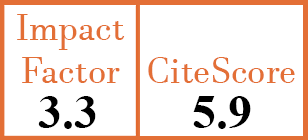Epidemiology
Osteoarthritis is as severe as rheumatoid arthritis: evidence over 40 years according to the same measure in each disease
T. Pincus1, I. Castrejon2, Y. Yazici3, K.A. Gibson4, M.J. Bergman5, J.A. Block6
- Department of Internal Medicine, Division of Rheumatology, Rush University Medical Center, Chicago, IL, USA. tedpincus@gmail.com
- Department of Internal Medicine, Division of Rheumatology, Rush University Medical Center, Chicago, IL, USA.
- NYU Hospital for Joint Diseases, New York University School of Medicine, New York, NY, USA.
- Department of Rheumatology, Liverpool Hospital, NSW, and Ingham Research Institute, Liverpool, Sydney, NSW, Australia.
- Arthritis and Rheumatology, Taylor Hospital, Ridley Park, PA, USA.
- Department of Internal Medicine, Division of Rheumatology, Rush University Medical Center, Chicago, IL, USA.
CER12800
2019 Vol.37, N°5 ,Suppl.120
PI 0007, PF 0017
Epidemiology
Free to view
(click on article PDF icon to read the article)
PMID: 31621569 [PubMed]
Received: 24/09/2019
Accepted : 24/09/2019
In Press: 14/10/2019
Published: 15/10/2019
Abstract
Osteoarthritis (OA) may be associated with substantial work disability, morbidity, costs, and increased mortality rates, often similar to rheumatoid arthritis (RA), documented in many published reports over the last 4 decades. However, OA generally has been viewed as less severe than RA. This discrepancy may be explained in part by: a) RA may have been considerably more severe in the past, prior to effective therapies. b) most older individuals have radiographic joint damage, which often is not associated with clinical symptoms. c) RA is associated with abnormal laboratory tests, which are regarded as conveying greater significance than symptoms of pain and disability according to a “biomedical model,” the dominant paradigm of modern medicine. d) Most reports of OA and RA have emphasised differences between the 2 diseases even beyond laboratory abnormalities in pathogenesis, physical findings, and imaging. e) Even pain and functional disability seen in both diseases are assessed using different patient self-report questionnaires, a WOMAC (Western Ontario McMaster Universities osteoarthritis index) in OA, and HAQ (health assessment questionnaire) in RA. An identical measure is required for optimal direct comparisons, which has been used in 8 studies performed between 1979 and 2019 at 8 sites in North America, Europe, and Australia. These studies were primarily based on retrospective analyses at sites which collected a patient questionnaire in routine clinical care by all patients at all visits to inform clinical decisions. A pain visual analogue scale (VAS) was higher in OA compared to RA in 11/12 patient groups, while physical function on a HAQ (health assessment questionnaire) or derivative MDHAQ (multidimensional HAQ) and RAPID3 (routine assessment of patient index data) were slightly higher in RA before 2013 and higher in OA in later reports. Furthermore, a study of population-based data from the 1978 US Health Interview Survey indicated similar levels of disability and earnings losses according to surrogate variables for OA and RA. Therefore, at least over the last 40 years, pain and functional disability in OA have appeared to be severe and similar to RA. These observations also-illustrate the potential value of using an identical patient questionnaire in all patients at all visits in routine care settings, analogous to using the same laboratory tests such as erythrocyte sedimentation rate (ESR) or C-reactive protein (CRP) in all rheumatic diseases, and maintaining a database of the results for later analyses.


